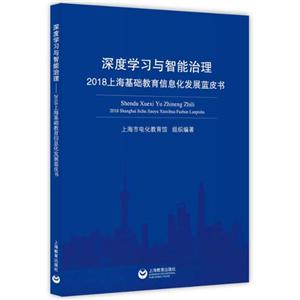有机化学中的高分辨率NMR技术-原著第2版

|
有机化学中的高分辨率NMR技术-原著第2版作者:克拉里奇(Timothy D W Claridge) 开 本:16开 书号ISBN:9787030284730 定价:99.0 出版时间:2010-09-01 出版社:科学出版社 |
有机化学中的高分辨率NMR技术-原著第2版 本书特色
《有机化学中的高分辨率nmr技术(原著第2版)》由英国牛津大学t.d.w.claridge编著,由elsevier出版公司于2009年出版。该书是有机化学工作者深入学习和掌握高分辨率nmr技术的一本好书。核磁共振在有机化合物结构鉴定中起着极其重要的作用;核磁共振特别是高分辨率nmr能够帮助我们解析复杂的有机分子的精细的结构。作为一门科学,在nmr领域,科学家们曾几次荣获诺贝尔化学奖。从应用方面来看,nmr已经在有机化学、有机合成化学、天然产物化学、生物化学、生命科学等领域成为强有力的工具。本书*大参考价值就是起点高、理论性强,深入地阐述了高分辨率nmr中的新方法和新技术。
有机化学中的高分辨率NMR技术-原著第2版 内容简介
本书旨在反映核磁共振领域有关小分子和中等分子结构鉴定的一些较为关键的进展。
第1~2章介绍了核磁共振谱学和脉冲方法背景。第3章提供了核磁共振谱学的实际应用,如低温、流量探头等。第4章阐述了一维方法,以及使用外部参比的核磁共振光谱的定量方法。第5章介绍了二维核磁以及同核相关的方法。如零量子干扰抑制。第6章介绍了异核相关技术以及异核耦合常数自身变化的测定等内容。第7~8章分别介绍了j-解析方法与noe效应。第9章主要阐述了弥散核磁共振谱和二维弥散序列核磁共振谱(dosy)。第10章描述了现代核磁共振实验,如绝热频率扫描再脉冲和去耦方面的应用等内容。
有机化学中的高分辨率NMR技术-原著第2版 目录
第2版前言第1版前言
第1章 绪论
1.1 高分辨率nmr的发展
1.2 现代高分辨率nmr和本书
1.2.1 本书包含的内容
1.2.2 脉冲序列命名法
1.3 现代nmr技术的应用
参考文献
第2章 高分辨率nmr的介绍
第3章 高分辨率nmr的实用性
第4章 一维技术
第5章 通过化学键i的相关性:同核位移相关
第6章 通过化学键ii的相关性:异核位移的相关性
第7章 裂分位移和耦合:j-解析谱
有机化学中的高分辨率NMR技术-原著第2版 节选
《有机化学中的高分辨率NMR技术(原著第2版·导读版)(英文版)》旨在反映核磁共振领域有关小分子和中等分子结构鉴定的一些较为关键的进展。第1-2章介绍了核磁共振谱学和脉冲方法背景。第3章提供了核磁共振谱学的实际应用,如低温、流量探头等。第4章阐述了一维方法,以及使用外部参比的核磁共振光谱的定量方法。第5章介绍了二维核磁以及同核相关的方法,如零量子干扰抑制。第6章介绍了异核相关技术以及异核耦合常数自身变化的测定等内容。第7-8章分另4介绍了J-解析方法与NOE效应。第9章主要阐述了弥散核磁共振谱和二维弥散序列核磁共振谱(DOSY)。第10章描述了现代核磁共振实验.如绝热频率扫描再脉冲和去耦方面的应用等内容。
有机化学中的高分辨率NMR技术-原著第2版 相关资料
插图:From the initial observation of proton magnetic resonance in water and in paraffin, thediscipline of nuclear magnetic resonance (NMR) has seen unparalleled growth as an analyticalmethod and now, in numerous different guises, finds application in chemistry, biology,medicine, materials science and geology. Despite its inception in the laboratories of physicists,it is in the chemical laboratory that NMR spectroscopy has found the greatest use and, it may beargued, has provided the foundations on which modern organic chemistry has developed.Modern NMR is now a highly developed, yet still evolving, subject" that all organic chemistsneed to understand, and appreciate the potential of, if they are to be effective in and able toprogress their current research. An ability to keep abreast of developments in NMR techniquesis, however, a daunting task, made difficult not only by the sheer number of available techniquesbut also by the way in which these new methods first appear. These are spread across thechemical literature in both specialised magnetic resonance journals and those dedicated tospecific areas of chemistry, as well as the more general entities. They are often referred to byesoteric acronyms and described in a seemingly complex mathematical language that does littleto endear them to the research chemist. The myriad of sequences can be wholly bewildering forthe uninitiated and can leave one wondering where to start and which technique to select for theproblem at hand. In this book I have attempted to gather together the most valuable techniquesfor the research chemist and to describe the operation of these using pictorial models. Even thislevel of understanding is perhaps more than some chemists may consider necessary, but onlyfrom this can one fully appreciate the capabilities and (of equal if not greater importance) thelimitations of these techniques. Throughout, the emphasis is on the more recently developedmethods that have, or undoubtedly will, establish themselves as the principal techniques for theelucidation and investigation of chemical structures in solution. NMR spectroscopy is, above all, a practical subject that is most rewarding when one has aninteresting sample to investigate, a spectrometer at one's disposal and the knowledge to make themost of this (sometimes alarmingly!) expensive instrumentation. As such, this book contains aconsiderable amount of information and guidance on how one implements and executes thetechniques that are described and thus should be equally at home in the NMR laboratory as at thechemist's or spectroscopist's desk.
自然科学 化学 有机化学
在线阅读
- 最新内容
- 相关内容
- 网友推荐
- 图文推荐
| [高考] 2022 西安电子科技大学《软件工程》大作业答案 (2022-04-25) |
| [家长教育] 孩子为什么会和父母感情疏离? (2019-07-14) |
| [教师分享] 给远方姐姐的一封信 (2018-11-07) |
| [教师分享] 伸缩门 (2018-11-07) |
| [教师分享] 回家乡 (2018-11-07) |
| [教师分享] 是风味也是人间 (2018-11-07) |
| [教师分享] 一句格言的启示 (2018-11-07) |
| [教师分享] 无规矩不成方圆 (2018-11-07) |
| [教师分享] 第十届全国教育名家论坛有感(二) (2018-11-07) |
| [教师分享] 贪玩的小狗 (2018-11-07) |






